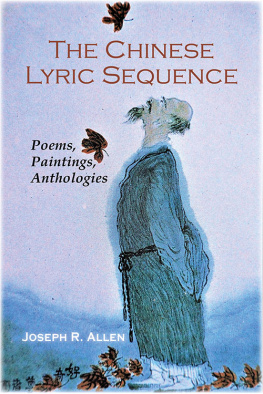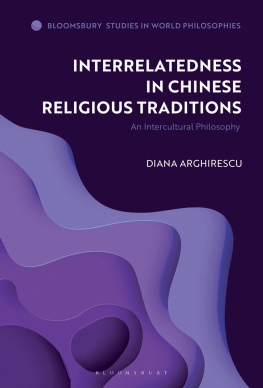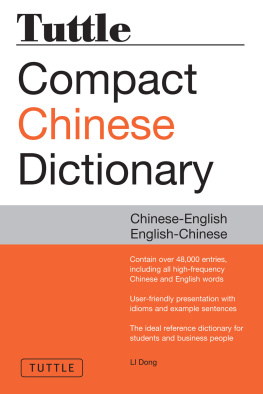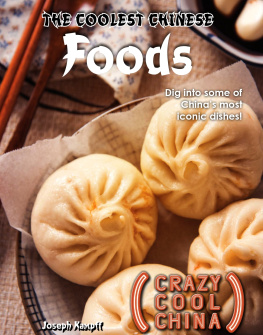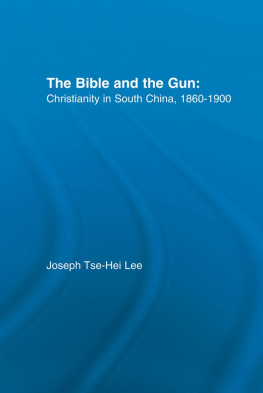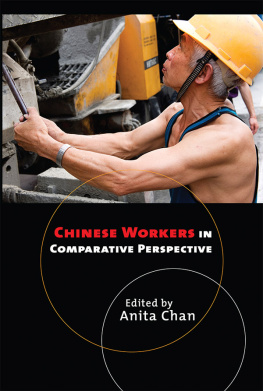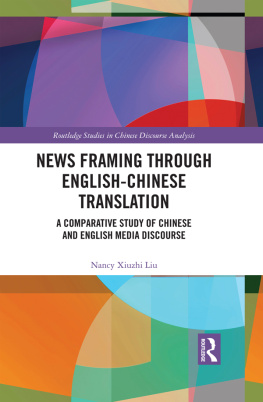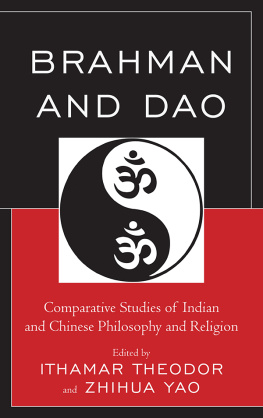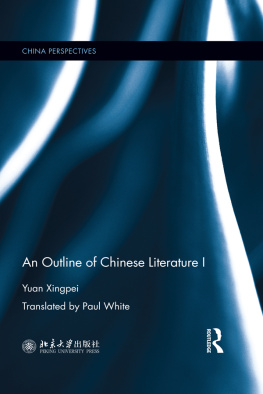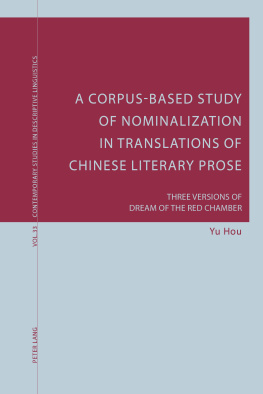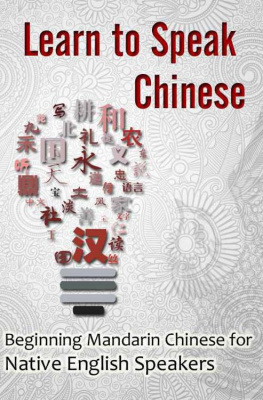Joseph Allen - The Chinese Lyric Sequence
Here you can read online Joseph Allen - The Chinese Lyric Sequence full text of the book (entire story) in english for free. Download pdf and epub, get meaning, cover and reviews about this ebook. year: 2020, publisher: Cambria Press, genre: Religion. Description of the work, (preface) as well as reviews are available. Best literature library LitArk.com created for fans of good reading and offers a wide selection of genres:
Romance novel
Science fiction
Adventure
Detective
Science
History
Home and family
Prose
Art
Politics
Computer
Non-fiction
Religion
Business
Children
Humor
Choose a favorite category and find really read worthwhile books. Enjoy immersion in the world of imagination, feel the emotions of the characters or learn something new for yourself, make an fascinating discovery.
- Book:The Chinese Lyric Sequence
- Author:
- Publisher:Cambria Press
- Genre:
- Year:2020
- Rating:3 / 5
- Favourites:Add to favourites
- Your mark:
- 60
- 1
- 2
- 3
- 4
- 5
The Chinese Lyric Sequence: summary, description and annotation
We offer to read an annotation, description, summary or preface (depends on what the author of the book "The Chinese Lyric Sequence" wrote himself). If you haven't found the necessary information about the book — write in the comments, we will try to find it.
Joseph Allen: author's other books
Who wrote The Chinese Lyric Sequence? Find out the surname, the name of the author of the book and a list of all author's works by series.
The Chinese Lyric Sequence — read online for free the complete book (whole text) full work
Below is the text of the book, divided by pages. System saving the place of the last page read, allows you to conveniently read the book "The Chinese Lyric Sequence" online for free, without having to search again every time where you left off. Put a bookmark, and you can go to the page where you finished reading at any time.
Font size:
Interval:
Bookmark:
Table of Contents
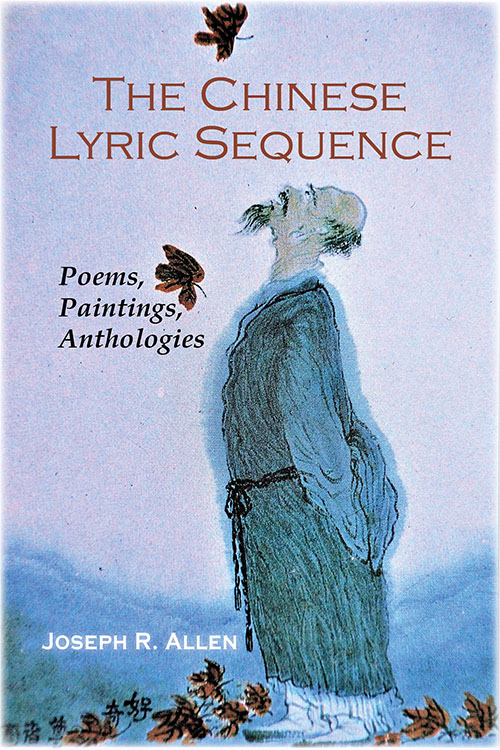
Cambria Sinophone World Series
General Editor: Victor H. Mair

EBSCO Publishing : eBook Collection (EBSCOhost) - printed on 5/23/2020 11:04 PM via MCGILL UNIV
AN: 2383549 ; Allen, Joseph R..; The Chinese Lyric Sequence : Poems, Paintings, Anthologies
Account: s1226075
Copyright 2020 Cambria Press
All rights reserved.
Front cover image is The Curious Arhat by Lo Ching,
reproduced by permission from Lo Ching.
No part of this publication may be reproduced, stored in or introduced
into a retrieval system, or transmitted, in any form, or by any means
(electronic, mechanical, photocopying, recording, or otherwise),
without the prior permission of the publisher.
Requests for permission should be directed to
permissions@cambriapress.com, or mailed to:
Cambria Press
100 Corporate Parkway, Suite 128
Amherst, New York 14226, USA
Library of Congress Cataloging-in-Publication Data on file.
ISBN: 978-1-62196-478-0
One April afternoon I walked through a Dong Qichang exhibition at the Nelson-Atkins Museum of Art counting paintings on the wall and writing down numbers on a small notepad. For several years I had been contemplating Chinese poetic sequences; here I found their visual equivalent: all these album leaves, cut away from their bindings and arrayed on the walls, many in predictable numbers, but a majority of them incompletefour of eight leaves, six of ten, eight of twelve, twelve of twenty-four.1 The predicable numbers were much the same as I had been seeing in the poetic sequences, especially eight, ten, and twelve.2 Although I realized that their incomplete condition was the result of the contingencies with which any exhibition must contend, at the same time I also began to wonder whether this fracturing of sets might offer a quality shared with the poetic sequences: the potential to have pieces of a set stand in full stead of their wholewhat I would later think of as a synecdochic construction. I was especially pleased to come upon an album with all its leaves displayed in their full complexity, but still there was something nearly equally satisfying to find a diminished version of an album. The album seemed to maintain its integrity even with parts missing or, as I would later discover, with those parts differently arranged.
I am here primarily concerned with poetic form and its epistemological significance, but it was that afternoon in the Nelson-Atkins galleries that brought the poetic form into focus. From that point on I began to think of the poetic sequence and the album of paintings as variations on one aesthetic shape, which I have come to call the Chinese lyric sequence.
My approach here is essentially a form of structural, or perhaps constructural, semiotics.3 I am interested in seeing what holds the literary text together in the face of its propensity to unravel. In this case I am interested in investigating the constructedness of the lyric sequence as a cultural object. Whereas multiplicity and contradiction are inherent in all cultural constructs, and I will be attentive to the texture that those ironic disruptions bring to a work of art, I am also drawn to our attempts to subdue those disruptions with aesthetic and other semiotic codeswhat I think of a call to order from the worka type of aesthetic interpellation. Here I hope to focus on attempts to hold the disorder at bay by bringing significant, if always finally insufficient, order to itwhat Robert Scholes has called, that fundamental human act of making the world intelligible: in a word, reading.4 Tian Xiaofei has extended that to reading of classical Chinese literature in its specific contingencies when she says:
Meaning is the way in which human beings negotiate with the world, and it is not stable. Historically and culturally conditioned, meaning is a constantly shifting ground, changing radically, appearing and disappearing. Therefore the act of reading almost invariably points back to the readers self. As we read the process of reading, we are also reading people who are engaged in the act of reading.5
I am here very much interested in reading the reading of the Chinese lyric sequence, even as I hope to suggest a larger cultural meaning of its form. I want to consider how the poems call to us to find their wholeness: at times this is a call to which other readers, both historical and contemporary, have responded; at other times, I take up that call myself.
This study echoes its own methodology: a constructed order laced with ironies of its own. Codes and grammars upon which human constructs are built are not only culturally and discourse specific but also often invisible to their users (in the sense that they seem true, god given, or natural). This makes engagement of these codes within the language of their own cultural system highly intertextual and self-referential, to such a point that one is often engaged in centripetal understanding that in the end celebrates the work by reproducing the very aesthetic code itselfpoems about poems, for example. Although this form of knowing is culturally intimate and inherently pleasurable, it also is trapped in a circle of forever differed meaning, as we pursue each layer of understanding in its own self-defining terms until one ends up only being able to repeat the code one wants to knowin imitation and verbatim reading. One way to establish a sense of distinguishable, although exotic, understanding of such cultural codes is to search for interpretations that break the tautology of self-interpretive systems, that is to find a different way of knowing.
That is what I hope to do here: to look at a nearly invisible Chinese literary form in a comparative perspective. I want to bring one type of artifactuality (academic inquiry in English) to bear on a very different sort (Chinese lyricism), hoping to illuminate the dynamics of the latter in the cross-light of the former. This is in no way a dismissal of indigenous, culturally intimate ways of knowing the works, nor is it a denial of the cross-current of contradiction and divergence that is always working against the form, always preventing a final interpretation. I hope to find a middle ground where this methodological cross-light will show the aesthetic whole, along with its inherent disruptions, as a construction that fits patterns of meaning that are culturally and historically bound, even if unstated: the Chinese lyric sequence.
In this study I use several terms to describe the relationship among cultural works, primarily poems, that form an associated group. Since the term sequence is commonly used in Western studies of poetic sets, such as in the sonnet sequence, I have adopted it here, although the definitions and assumptions about how a sequence works are clearly distinct in these different literary and aesthetic cultures. I use Chinese lyric sequence as a term of highest order to describe a set of potentially independent texts/images that have come to be read as a related group, sometimes in a set order.6 That set and order are not, however, necessarily the way the works were initially produced or even intended to be read, but it is how they have been presented to readers in canonical or authorizing environments. It is the nature of the Chinese lyric sequence that those contexts, and the sets and orders they present, are extremely fluid and open to interpretation and editing. In this way the sequence of the Chinese lyric sequence is finally only a phenomenon, or better yet phenomena, of the individual reading/viewing experiences. In this way, I am not so much interested in original intention as in the practices of reception and reading.
Next pageFont size:
Interval:
Bookmark:
Similar books «The Chinese Lyric Sequence»
Look at similar books to The Chinese Lyric Sequence. We have selected literature similar in name and meaning in the hope of providing readers with more options to find new, interesting, not yet read works.
Discussion, reviews of the book The Chinese Lyric Sequence and just readers' own opinions. Leave your comments, write what you think about the work, its meaning or the main characters. Specify what exactly you liked and what you didn't like, and why you think so.

